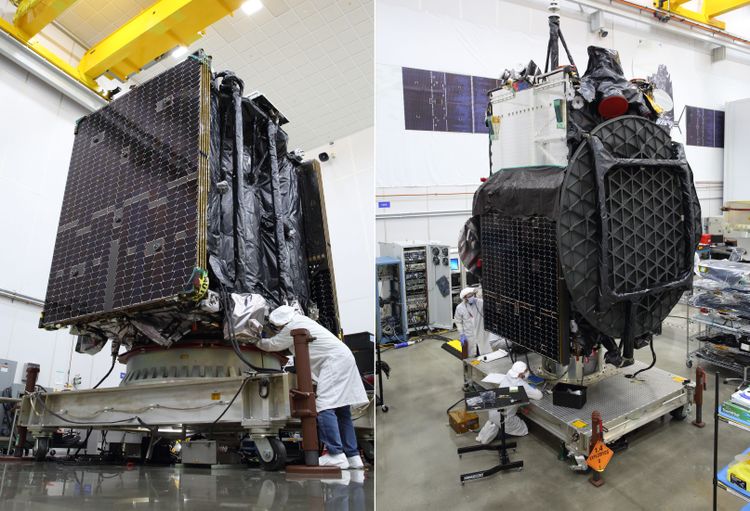A European rocket will launch a space tug and 2 satellites today. Here's how to watch live.
Liftoff is between 5:30 p.m. and 6:16 p.m. ET!

Arianespace plans to send a satellite-servicing vehicle — along with two satellites — into space on today (July 31) and you can watch the launch online.
The launch will take place between 6:30 p.m. and 7:16 p.m. local time in Kourou, French Guiana (5:30 p.m. and 6:16 p.m. EDT, or 2130 and 2216 GMT). You can watch the launch live here and on Space.com's homepage, courtesy of Arianespace. You can also tune direcely to Arianespace's webcast on YouTube. The webcast will begin about 20 minutes before liftoff.
This launch will be the fifth for Arianespace in 2020. The mission was delayed from its previous Tuesday (July 28) launch date due to "additional technical checks required under the fairing and the Ariane dual-launch system," Arianespace said in a statement, but the satellites are otherwise ready to go.
Related: Two private satellites just docked in space in historic first
The satellite servicing spacecraft, called Mission Extension Vehicle 2 (MEV-2) on the Ariane 5 rocket is the second one built by Northrop Grumman subsidiary SpaceLogistics LLC for satellite communications provider Intelsat. The first MEV, MEV-1, performed a first, historic docking in February with the Intelsat satellite and a IS-901, which was low on fuel. The long-term aim of the MEV series is to refuel and service aging satellites in orbit to extend their missions, which could be a cheaper option than sending up a replacement satellite.
With the MEV-1 mission deemed a success in April — the Intelsat-901 satellite returned to its normal work that month, Intelsat said in a statement — MEV-2 is set for launch to rendezvous with another Intelsat satellite, called Intelsat 1002.
"Once docked, it [MEV-2] will control the orbit of the customer satellite using its own thrusters," Arianespace said in a statement, adding that the vehicle will be available for other missions after servicing the Intelsat satellite.
Breaking space news, the latest updates on rocket launches, skywatching events and more!
Stacked with the MEV-2 will be an Intelsat satellite called Galaxy 30, the first replacement satellite in a larger effort to replace Intelsat's aging North American Galaxy communications satellites. The new satellites will offer ultra-high definition media service allowing customers to bypass companies for direct satellite streaming and a range of broadband, mobile and network services, Arianespace said in the same statement.
Rounding out the payloads will be the Maxar BSAT-4b satellite launched on behalf of Japan's Broadcasting Satellite System Corp. The satellite will be used for direct-to-home television service in Japan and serve as a backup for the similar BSAT-4a, which launched in September 2017.
Today's launch will be the 253rd Ariane mission overall. Arianespace is developing a successor rocket, Ariane 6, that will eventually replace the launch services provided by the heavy-lift Ariane 5.
Follow Elizabeth Howell on Twitter @howellspace. Follow us on Twitter @Spacedotcom and on Facebook.

Elizabeth Howell (she/her), Ph.D., was a staff writer in the spaceflight channel between 2022 and 2024 specializing in Canadian space news. She was contributing writer for Space.com for 10 years from 2012 to 2024. Elizabeth's reporting includes multiple exclusives with the White House, leading world coverage about a lost-and-found space tomato on the International Space Station, witnessing five human spaceflight launches on two continents, flying parabolic, working inside a spacesuit, and participating in a simulated Mars mission. Her latest book, "Why Am I Taller?" (ECW Press, 2022) is co-written with astronaut Dave Williams.

